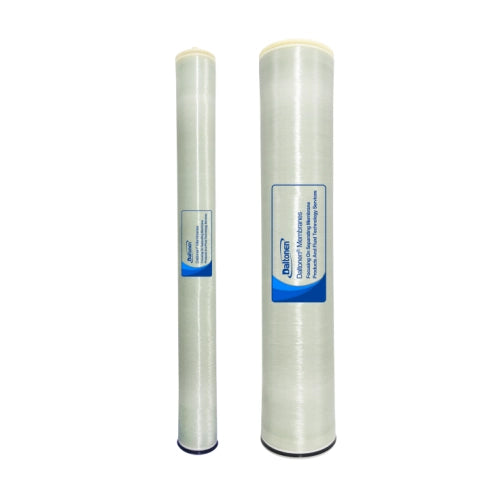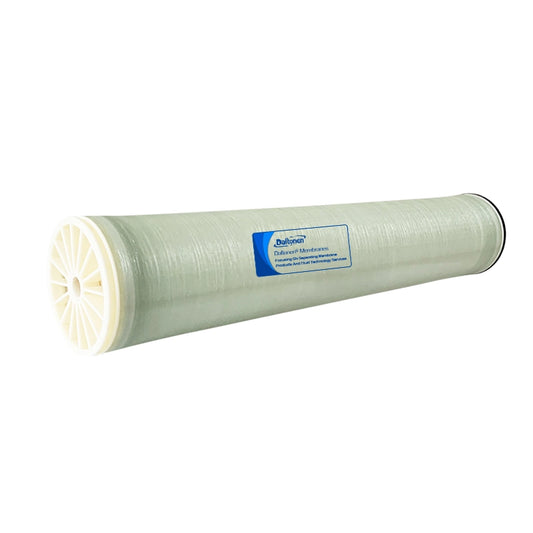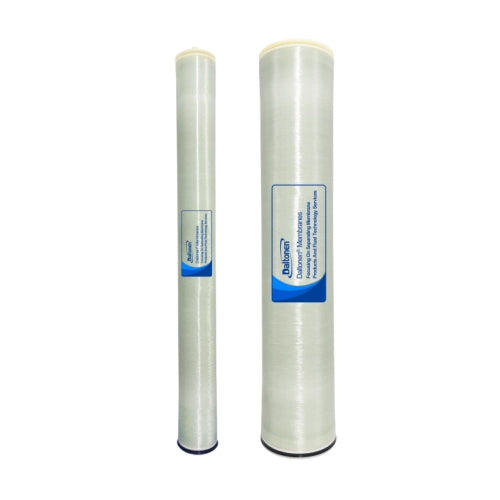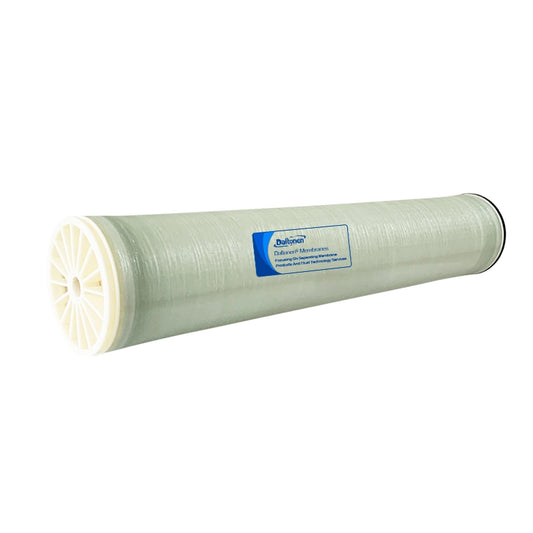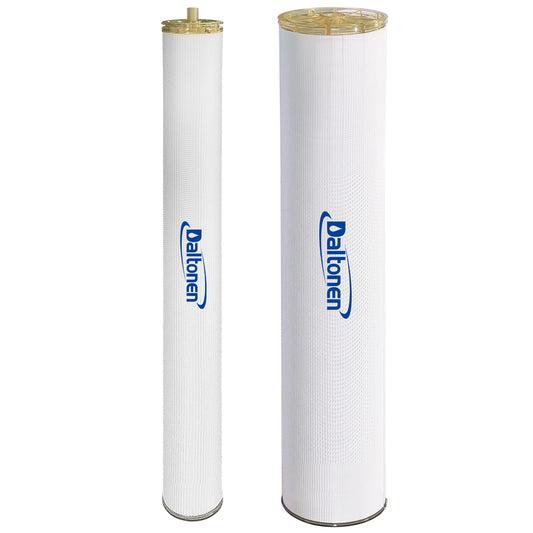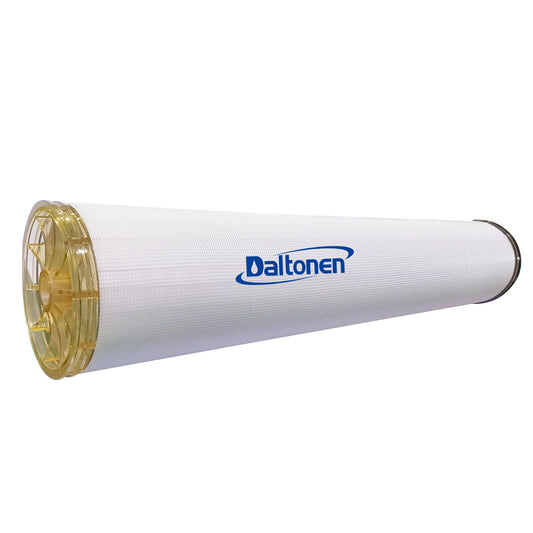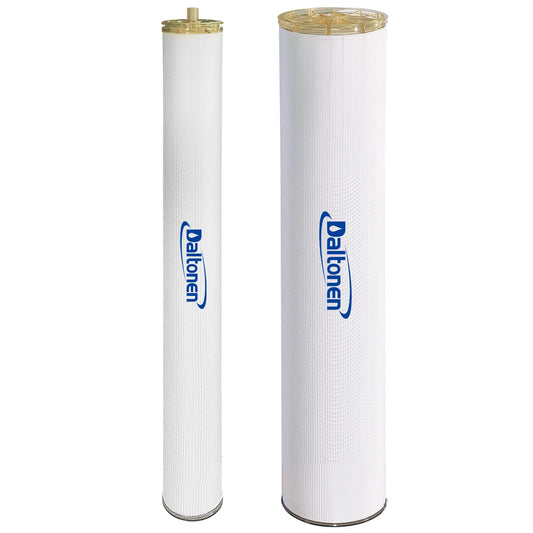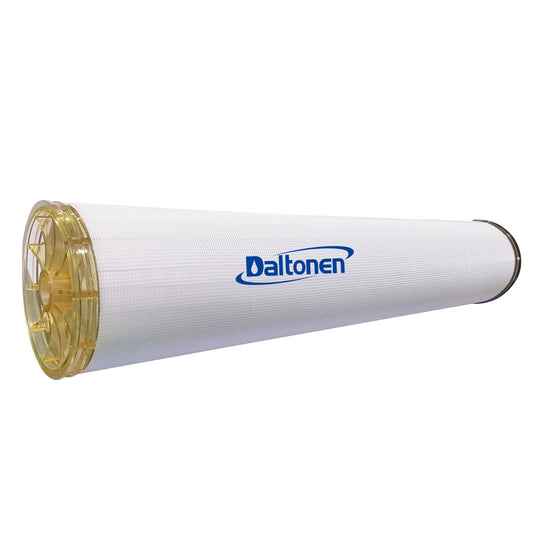Selection of RO Membranes for Zero Discharge of Aquaculture Wastewater
27 Apr 2025
-
Analysis of the Characteristics of Aquaculture Wastewater1.1 Complexity of Water Quality ComponentsAquaculture wastewater mainly comes from the excreta of livestock and poultry, residual feed, and pen washing water during the breeding process, and its water quality components are extremely complex.
-
High organic matter content: The wastewater contains a large amount of organic substances such as proteins, fats, and carbohydrates, with a chemical oxygen demand (COD) usually ranging from 5000 to 20000mg/L. These organic substances are good substrates for microbial growth. If not treated, they will consume a large amount of dissolved oxygen in the water body, leading to eutrophication of the water body.
-
High ammonia nitrogen concentration: The nitrogen in livestock and poultry manure mainly exists in the form of ammonia nitrogen, and the ammonia nitrogen concentration in aquaculture wastewater is generally between 500 and 1500mg/L. Ammonia nitrogen in water bodies will be converted into nitrites and nitrates, which are toxic to aquatic organisms and also increase the alkalinity of the water body.
-
High suspended solids content: The wastewater contains a large amount of solid suspended solids such as manure and residual feed, with a suspended solids concentration that can reach 10000-30000mg/L. These suspended solids affect the transparency of the water body, hinder the penetration of light, and affect the photosynthesis of aquatic plants.
-
High pathogen content: Aquaculture wastewater contains a large number of pathogens, viruses, and parasite eggs, such as E. coli, Salmonella, and Ascaris eggs. If these pathogens are discharged without treatment, they will pose a serious threat to the environment and human health.
1.2 Range of Pollutant ConcentrationsThe concentration range of pollutants in aquaculture wastewater varies greatly due to factors such as the type of breeding, breeding scale, feed composition, and breeding management methods.-
Chemical oxygen demand (COD): Generally ranges from 5000 to 20000mg/L. In some small, poorly managed farms, the COD concentration may be as high as over 30000mg/L; while in large, modern farms, by optimizing feed formulas and strengthening pen management, the COD concentration can be kept at a lower level.
-
Ammonia nitrogen (NH₃-N): The concentration is usually between 500 and 1500mg/L. The concentration of ammonia nitrogen is greatly affected by the type of breeding animals and the protein content in the feed. For example, pig manure has a higher ammonia nitrogen content, and the ammonia nitrogen concentration in its breeding wastewater is generally between 800 and 1200mg/L; while chicken manure has a relatively lower ammonia nitrogen content, and its breeding wastewater ammonia nitrogen concentration is around 500-800mg/L.
-
Suspended solids (SS): The concentration range is 10000-30000mg/L. In farms using the dry manure removal process, the suspended solids concentration is relatively low, generally between 10000 and 15000mg/L; while in farms using the water flushing manure process, the suspended solids concentration is higher, reaching 20000-30000mg/L.
-
Total phosphorus (TP): The concentration is generally between 200 and 600mg/L. Phosphorus mainly comes from phosphates in feed and organic phosphorus compounds in animal manure. In some high-density breeding farms, due to the high phosphorus content in the feed, the total phosphorus concentration may reach above 600mg/L.
-
Heavy metals: Aquaculture wastewater also contains a certain amount of heavy metals, such as copper, zinc, lead, etc. These heavy metals mainly come from feed additives and veterinary drugs. Among them, the concentrations of copper and zinc are relatively high, generally between 1 and 5mg/L; the concentration of lead is lower, usually between 0.1 and 0.5mg/L.
-

-
-
Principles and Advantages of RO Membrane Technology2.1 Basic Principle of Reverse Osmosis TechnologyReverse osmosis (RO) technology is a membrane separation technology driven by pressure difference. Its core principle is to use the selective permeability of semipermeable membranes to achieve the separation of solutes and solvents. In the treatment of aquaculture wastewater, RO membranes can effectively intercept dissolved solids, organic matter, microorganisms, and other pollutants in the wastewater, allowing water molecules to pass through the membrane pores and be separated, thereby purifying the water quality. The pore size of RO membranes is usually between 0.0001 and 0.001 micrometers, which can effectively remove harmful substances such as bacteria, viruses, and heavy metal ions from water, with a removal rate of over 90%. For example, for common pollutants such as ammonia nitrogen and total phosphorus in aquaculture wastewater, the removal rates of RO membranes can reach about 95% and 90%, respectively, significantly reducing the concentration of pollutants in the wastewater.2.2 Advantages in Wastewater Treatment2.2.1 Efficient Pollutant RemovalRO membrane technology shows excellent pollutant removal ability in the treatment of aquaculture wastewater. Studies have shown that in the treatment of high-concentration aquaculture wastewater, RO membranes can reduce the chemical oxygen demand (COD) to below 100mg/L, ammonia nitrogen concentration to below 1mg/L, suspended solids concentration to below 10mg/L, and total phosphorus concentration to below 0.1mg/L. These data indicate that RO membrane technology can effectively remove the main pollutants in aquaculture wastewater, enabling it to meet discharge standards or reuse requirements, and providing reliable technical support for the zero discharge of aquaculture wastewater.2.2.2 Energy-saving and Resource RecoveryRO membrane technology has certain energy-saving advantages in the treatment of aquaculture wastewater. Compared with traditional wastewater treatment methods, the energy consumption of RO membrane technology is relatively low, with an energy consumption of about 1-2 kilowatt-hours per cubic meter of wastewater treated. In addition, RO membrane technology can also achieve the recycling of water resources, with a recovery rate of up to 70%-80%. The treated aquaculture wastewater can be reused for pen washing and greening in the breeding farm, reducing the dependence on fresh water resources, lowering breeding costs, and also helping to alleviate the problem of water shortage.2.2.3 Stable Treatment EffectRO membrane technology has a stable treatment effect in the treatment of aquaculture wastewater, unaffected by fluctuations in wastewater quality. Even when the concentration and composition of pollutants in aquaculture wastewater change, RO membranes can still maintain a high removal efficiency. For example, when treating wastewater from farms of different scales, the removal rate of RO membranes basically remains stable, unaffected by differences in farm scale and wastewater composition. This stable treatment effect provides a guarantee for the long-term stable treatment of aquaculture wastewater, reducing the environmental risks caused by unstable wastewater treatment effects.2.2.4 Small FootprintRO membrane technology has compact equipment and a relatively small footprint. Compared with traditional sedimentation tanks and biological treatment tanks and other wastewater treatment facilities, RO membrane equipment has a smaller volume and is flexible to install, suitable for use in breeding farms with limited space. For example, a set of RO membrane equipment with a treatment capacity of 100 cubic meters per day only occupies an area of 10-20 square meters, greatly saving the space of the breeding farm and providing convenience for the planning and layout of the farm.2.2.5 High Degree of AutomationThe operation process of RO membrane technology can be highly automated, reducing the complexity and labor intensity of manual operation. By installing an automatic control system, the operating parameters of the RO membrane equipment, such as pressure, flow, and water quality, can be monitored and controlled in real time to ensure the stable operation of the equipment. For example, the automatic control system can automatically adjust the operating pressure and flow rate of the RO membrane according to the quality and flow of the wastewater, optimize the treatment effect, and also realize functions such as fault alarm and automatic shutdown, improving the safety and reliability of the equipment operation.
-
Types and Performance Parameters of RO Membranes3.1 Classification of Common RO Membrane TypesRO membranes are mainly divided into three types: cellulose acetate membranes (CA), aromatic polyamide membranes (PA), and thin-film composite membranes (TFC), according to their materials and structures.
-
Cellulose acetate membrane (CA): This membrane material is widely available and has a low cost. It has good acid and alkali resistance and pollution resistance. Its pore size distribution is relatively uniform, which can effectively remove dissolved solids and microorganisms from wastewater. However, the desalination rate of CA membranes is relatively low, generally between 85% and 90%, and it is prone to membrane pollution in the treatment of high-concentration wastewater, leading to a decrease in flux. For example, in the treatment of aquaculture wastewater with high ammonia nitrogen concentration, the flux attenuation rate of CA membranes is faster, and more frequent cleaning and maintenance are required.
-
Aromatic polyamide membrane (PA): PA membranes are one of the most widely used RO membranes at present, with a high desalination rate (99%-99.5%) and high water flux. They have good chemical stability and can operate stably in a wide range of pH values, with significant retention effects on organic matter and microorganisms. However, the pollution resistance of PA membranes is relatively poor, and they are prone to pollution when treating aquaculture wastewater containing a large amount of organic matter and suspended solids, leading to a decline in membrane performance. In addition, PA membranes are sensitive to oxidants such as chlorine, and the dosage of oxidants in the pretreatment process needs to be strictly controlled to avoid damage to the membrane material.
-
Thin-film composite membrane (TFC): TFC membranes are a new type of RO membranes, consisting of a thin active layer and a supporting layer. The active layer is usually made of materials such as polyamide, with high desalination rate and selectivity, which can effectively remove trace pollutants from wastewater. The supporting layer provides mechanical support for the active layer, improving the strength and stability of the membrane. The desalination rate of TFC membranes can reach above 99.5%, and they have better anti-pollution performance and chemical stability. When treating aquaculture wastewater, TFC membranes can effectively remove pollutants such as ammonia nitrogen and total phosphorus in the wastewater while maintaining a high water flux. However, the preparation process of TFC membranes is complex and the cost is high, which limits their wide application in large-scale aquaculture wastewater treatment.
3.2 Key Performance Parameters (Desalination Rate, Flux, etc.)The key performance parameters of RO membranes include desalination rate, water flux, membrane pollution rate, and service life, all of which directly affect the application effect of RO membranes in the treatment of aquaculture wastewater.-
Desalination rate: Desalination rate is an important indicator to measure the separation performance of RO membranes, indicating the membrane's ability to remove dissolved solids in water. In the treatment of aquaculture wastewater, RO membranes with high desalination rates can effectively remove dissolved pollutants such as ammonia nitrogen and total phosphorus in the wastewater, reducing the salinity and hardness of the wastewater. Studies have shown that the desalination rates of aromatic polyamide membranes (PA) and thin-film composite membranes (TFC) are usually between 99% and 99.5%, while the desalination rate of cellulose acetate membranes (CA) is relatively low, generally between 85% and 90%. For example, in the treatment of aquaculture wastewater with an ammonia nitrogen concentration of 1000mg/L, PA and TFC membranes can reduce the ammonia nitrogen concentration to below 10mg/L, while the ammonia nitrogen concentration after treatment with CA membranes may be around 100mg/L, indicating that PA and TFC membranes have significant advantages in removing dissolved pollutants.
-
Water flux: Water flux refers to the amount of water passing through a unit membrane area in a unit of time, and is an important parameter to measure the treatment capacity of RO membranes. RO membranes with high water flux can treat more wastewater in a shorter time, improving treatment efficiency. However, water flux is related to the pore size and distribution of the membrane. The larger the pore size, the higher the water flux, but the desalination rate may decrease. Generally, the water flux of aromatic polyamide membranes (PA) is between 15 and 25L/m²·h, the water flux of thin-film composite membranes (TFC) is between 20 and 30L/m²·h, and the water flux of cellulose acetate membranes (CA) is relatively low, usually between 10 and 15L/m²·h. In practical applications, it is necessary to select the appropriate type of RO membrane according to the water quality of aquaculture wastewater and treatment requirements to balance the relationship between desalination rate and water flux.
-
Membrane pollution rate: The membrane pollution rate refers to the speed at which RO membranes are polluted during operation, and is an important factor affecting the service life and treatment effect of the membrane. Aquaculture wastewater contains a large amount of organic matter, suspended solids, and microorganisms, which are prone to adsorption and deposition on the membrane surface, forming a pollution layer, leading to a decrease in membrane flux and desalination rate. Studies have shown that the pollution rate of cellulose acetate membranes (CA) is relatively fast, with a flux decrease of 30%-40% after 100 hours of operation; while the pollution rate of aromatic polyamide membranes (PA) and thin-film composite membranes (TFC) is slower, with a flux decrease of 10%-20% after 100 hours of operation. In order to slow down the membrane pollution rate, it is necessary to effectively pretreat the aquaculture wastewater to remove large-particle suspended solids and part of the organic matter in the wastewater, and at the same time, adopt appropriate cleaning methods to regularly clean the RO membranes physically or chemically.
-
Service life: The service life of RO membranes refers to the effective operating time of the membrane under normal use conditions, generally measured in years. RO membranes with a long service life can reduce the frequency of membrane replacement and operating costs, improving the economy of the aquaculture wastewater treatment system. The service life of cellulose acetate membranes (CA) is generally 2-3 years, that of aromatic polyamide membranes (PA) is 3-5 years, and that of thin-film composite membranes (TFC) is longer, up to 5-7 years. The service life of membranes is not only related to the performance of membrane materials, but also closely related to operating conditions, pretreatment effects, and cleaning and maintenance factors. In practical applications, by optimizing operating parameters and strengthening membrane maintenance management, the service life of RO membranes can be extended, improving the stability and economy of the aquaculture wastewater treatment system.

-
-
Requirements of RO Membranes for Zero Discharge of Aquaculture Wastewater4.1 Anti-pollution Capability RequirementsAquaculture wastewater has a complex composition and contains a large amount of organic matter, suspended solids, and microorganisms, which are highly prone to causing RO membrane pollution. Studies have shown that untreated aquaculture wastewater can cause a rapid decline in RO membrane flux during the initial operation. For example, the flux of cellulose acetate membranes (CA) may decrease by 30%-40% after 100 hours of operation. In order to achieve zero discharge, RO membranes need to have strong anti-pollution capabilities. For example, RO membranes modified by surface modification technology, by introducing hydrophilic groups on the membrane surface, can effectively reduce the interaction between the membrane surface and pollutants, reducing the adsorption and deposition of pollutants. Experiments have shown that the pollution rate of thin-film composite membranes (TFC) modified with hydrophilicity can be reduced to a flux decrease of 5%-10% after 100 hours of operation, significantly improving the membrane's anti-pollution performance. In addition, regular physical cleaning (such as backwashing) and chemical cleaning (such as acid and alkali cleaning) are also important means to maintain the anti-pollution capability of RO membranes. Reasonable cleaning cycles and methods can effectively restore membrane flux and extend membrane life.4.2 High Salinity AdaptabilityAfter treatment with RO membranes, aquaculture wastewater will produce concentrated liquid with high salinity. As the concentrated liquid accumulates continuously, its salinity will gradually increase, which poses higher requirements for the desalination performance and pressure resistance of RO membranes. Under high salinity conditions, the desalination rate of RO membranes may decrease, and the membrane material is also prone to corrosion. For example, when the salinity of the concentrated liquid of aquaculture wastewater reaches above 10g/L, the desalination rate of ordinary aromatic polyamide membranes (PA) may drop from 99% to around 95%. In order to adapt to high salinity environments, it is necessary to select RO membranes with high desalination rates and good corrosion resistance. Thin-film composite membranes (TFC), due to their special structure and materials, have better salt resistance. Even in concentrated liquid with high salinity, their desalination rate can still be maintained above 98%. In addition, improving the pressure resistance of RO membranes is also the key to dealing with high salinity. During the treatment of high salinity concentrated liquid, the pressure difference between the two sides of the membrane will increase, and the RO membrane needs to be able to withstand higher pressure to ensure normal operation. By optimizing the support structure and material properties of the membrane, the pressure resistance of the RO membrane can be improved, enabling it to operate stably under high salinity and high pressure conditions, thereby achieving the goal of zero discharge of aquaculture wastewater.
-
Selection of RO Membrane Brands and Models Suitable for Zero Discharge of Aquaculture Wastewater5.1 Recommendations of Well-known Domestic and International BrandsIn the zero-discharge project of aquaculture wastewater, the selection of suitable RO membrane brands is crucial. The following are some well-known domestic and international RO membrane brands and their characteristics:
-
DuPont: DuPont is a global leader in specialty materials, and its RO membrane products enjoy a high reputation in the market. The Filmtec™ series of RO membranes from DuPont has a high desalination rate (above 99.5%), high water flux, and good anti-pollution properties. This series of membranes uses advanced thin-film composite technology to effectively remove pollutants such as ammonia nitrogen and total phosphorus from aquaculture wastewater. The service life of DuPont RO membranes is relatively long, generally 5-7 years, and they perform well in the treatment of high salinity concentrated liquid, with their pressure resistance and corrosion resistance widely recognized.
-
Hydranautics: Hydranautics is one of the world's largest RO membrane manufacturers, and its products are widely used in various water treatment fields. The ESP series of RO membranes from Hydranautics is designed for highly polluted water quality and has good anti-pollution performance and stable desalination effects. The desalination rate of this series of membranes can reach 99.2%-99.7%, with a high water flux, meeting the high requirements for aquaculture wastewater treatment. The service life of Hydranautics RO membranes is generally 3-5 years, and their service life can be further extended by optimizing operating parameters and regular cleaning.
-
Daltonen Membrane: The Daltonen Membrane PURE brackish water desalination series reverse osmosis membrane elements use a short membrane sheet structure, increase the number of membrane pages, and greatly improve the membrane usage efficiency, providing economical, stable, and excellent membrane elements for water treatment systems. The PURE brackish water desalination series is widely used in many fields such as brackish water desalination, boiler feedwater for thermal power plants, surface water, and zero or near-zero discharge of wastewater in the petroleum and petrochemical industries. The PURE brackish water desalination series membrane elements have low operating pressure and high removal rates for difficult-to-treat dissolved salts such as TOC and SiO₂, providing more cost-effective choices for industrial applications.
-
CSM (Times Water): CSM is a leading RO membrane manufacturer in China, and its products have a high market share in the domestic market. The seawater desalination membrane from CSM has a high desalination rate (above 99.5%) and good anti-pollution properties, effectively treating high-concentration pollutants in aquaculture wastewater. The performance of this brand's membrane products is comparable to that of imported brands, but the price is more advantageous, suitable for large-scale aquaculture wastewater treatment projects. The service life of CSM RO membranes is generally 3-5 years, and their operational stability and economy can be improved by optimizing pretreatment processes and regular cleaning and maintenance.
5.2 Performance Comparison of Typical ModelsThe following is a performance comparison of several typical RO membrane models to help select suitable RO membranes for the zero discharge of aquaculture wastewater: -
表格
| Brand Model | Desalination Rate (%) | Water Flux (L/m²·h) | Anti-pollution | Pressure Resistance (MPa) | Service Life (years) |
|---|---|---|---|---|---|
| DuPont Filmtec™ SW30HRLE-440 | 99.5-99.7 | 18-22 | High | 3.4 | 5-7 |
| Hydranautics ESPA4 | 99.2-99.7 | 15-20 | High | 3.0 | 3-5 |
| Daltonen PURE-400 | 99.5-99.7 | 18-22 | High | 3.4 | 3-5 |
| CSM SW30HRLE-440 | 99.5-99.7 | 16-20 | High | 3.0 | 3-5 |
From the table above, it can be seen that the RO membranes from DuPont and Dow show excellent performance in terms of desalination rate and water flux, and have longer service life, but the prices are relatively high. The ESPA4 model from Hydranautics has good anti-pollution performance and stable desalination effects, with a moderate price. The seawater desalination membrane from CSM is comparable in performance to imported brands, but it has a more advantageous price, suitable for aquaculture wastewater treatment projects with limited budgets. When selecting RO membranes, it is necessary to comprehensively consider factors such as water quality characteristics, treatment requirements, and budget to ensure that the selected membrane products can meet the needs of zero discharge of aquaculture wastewater.
-
Economic Considerations in the Selection of RO Membranes6.1 Assessment of Operation and Maintenance CostsThe operation and maintenance costs of RO membrane systems mainly include energy consumption costs, membrane cleaning costs, membrane replacement costs, and manual maintenance costs. Energy consumption is one of the main costs of RO membrane system operation, and its costs are related to factors such as the amount of treated water, operating pressure, and electricity prices. Generally speaking, the energy consumption for treating 1 cubic meter of aquaculture wastewater is about 1-2 kilowatt-hours. Calculated at an average electricity price of 0.6 yuan per kilowatt-hour, the energy consumption cost for treating 1 cubic meter of wastewater is about 0.6-1.2 yuan. Membrane cleaning is an important means to maintain the performance of RO membranes, and the cleaning frequency and the amount of cleaning agents used will affect the cleaning costs. For highly polluted water quality such as aquaculture wastewater, the cleaning cycle of the membrane is generally 1-3 months, and the cleaning cost each time is about 100-300 yuan. The service life of RO membranes is generally 3-7 years, and the cost of membrane replacement is high, accounting for about 30%-40% of the total operation and maintenance costs. Manual maintenance costs mainly include the labor costs of equipment inspection, operation, and maintenance, which generally account for 10%-15% of the total operation and maintenance costs. Overall, the operation and maintenance costs of RO membrane systems are between 0.8 and 2.5 yuan per cubic meter of wastewater. In order to reduce operation and maintenance costs, it is necessary to optimize operating parameters, extend the service life of membranes, and reasonably arrange cleaning and maintenance work.
-
Successful Case Analysis7.1 Case of Zero Discharge Project of Aquaculture WastewaterIn the zero-discharge project of wastewater from a large-scale pig farm, reverse osmosis (RO) membrane technology was used as the core treatment process. The farm has a stock of 100,000 pigs and produces about 500 cubic meters of aquaculture wastewater daily. The wastewater has a complex composition, with a chemical oxygen demand (COD) between 15000 and 20000mg/L, ammonia nitrogen concentration between 800 and 1200mg/L, suspended solids concentration as high as 20000-30000mg/L, and total phosphorus concentration around 400-600mg/L.The RO membrane system used in the project consists of multi-stage pretreatment units and RO membrane components. The pretreatment units include screens, sedimentation tanks, dissolved air flotation tanks, and biological filters, which effectively remove most of the suspended solids and part of the organic matter, reducing the pollution load of the wastewater and providing a guarantee for the stable operation of the RO membranes. The RO membrane components selected thin-film composite membranes (TFC), whose high desalination rate and good anti-pollution properties enable them to effectively remove dissolved pollutants from the wastewater while maintaining a high water flux.After treatment with RO membranes, the water quality of the wastewater has been significantly improved. The chemical oxygen demand (COD) of the treated water is reduced to below 100mg/L, the ammonia nitrogen concentration is lower than 1mg/L, the suspended solids concentration is lower than 10mg/L, and the total phosphorus concentration is lower than 0.1mg/L, meeting the national discharge standards and reuse requirements. The treated water is reused for pen washing and greening irrigation in the farm, realizing the recycling of water resources, reducing the dependence on fresh water resources, and lowering breeding costs.The successful implementation of this project not only solved the wastewater discharge problem of the farm, but also provided a reference for the zero discharge of aquaculture wastewater. Through reasonable process design and equipment selection, RO membrane technology has shown excellent performance in treating high-concentration and complex-component aquaculture wastewater, proving its feasibility in the field of zero discharge of aquaculture wastewater.7.2 Assessment of RO Membrane Selection EffectsIn the zero-discharge project of wastewater from the above-mentioned pig farm, the thin-film composite membrane (TFC) selected performed excellently. Its desalination rate is as high as above 99.5%, which can effectively remove dissolved pollutants such as ammonia nitrogen and total phosphorus from the wastewater. During operation, the water flux of the membrane remains stable at 20-30L/m²·h, and it can still maintain a high treatment efficiency even when treating high-concentration aquaculture wastewater.The anti-pollution performance of the membrane is particularly prominent. Through surface modification technology, hydrophilic groups were introduced on the membrane surface, significantly reducing the adsorption and deposition of pollutants and slowing down the membrane pollution rate. In actual operation, the cleaning cycle of the membrane was extended to 3-4 months, and the flux recovery rate after each cleaning can reach more than 90%. In addition, the service life of the membrane is expected to reach 5-7 years, and in the treatment of high salinity concentrated liquid, its desalination rate can still be maintained above 98%, showing good salt resistance and corrosion resistance.From an economic point of view, although the initial investment cost of thin-film composite membranes (TFC) is relatively high, its longer service life and lower operation and maintenance costs ensure the economy of the entire project. By optimizing operating parameters and strengthening membrane maintenance management, the operating costs were further reduced, and the stability and economy of the system were improved.In summary, thin-film composite membranes (TFC) performed excellently in the zero-discharge project of aquaculture wastewater. Their efficient pollutant removal capabilities, good anti-pollution performance, and long service life make them the ideal choice for RO membranes in zero-discharge projects of aquaculture wastewater.
Tags:
